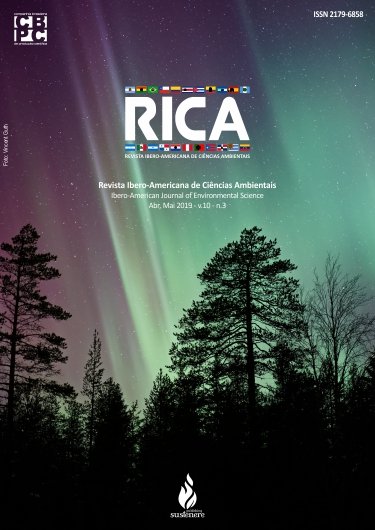Management systems and parameters of soil organic matter of the savannah of Bahia, Brazil
DOI:
https://doi.org/10.6008/CBPC2179-6858.2019.003.0025Keywords:
Brazilian Savannah, Carbon Stock, Soil Microbial Biomass, Agricultural and Environmental Sustainability, Soil Organic MatterAbstract
The objective of this work was to evaluate a Red-Yellow Latosol of a sandy-loam texture in the West of Bahia, Brazil, cultivated with soybean (S) under conventional tillage (CT) and no-tillage system (NTS) using Total Organic Carbon (TOC), Soil Microbial Biomass Carbon (SMB-C), Soil Basal Respiration (SBR), Microbial quotient (Micq), Metabolic quotient (qCO2), Bulk density (Bd) and Carbon Stocks (C_St).The experimental design was a randomized block with four replications: T1 treatments: Soybean (S) under Conventional tillage (S_CT) and T2: Soybean under No-Tillage System (S _NTS), having as reference, a Native Savannah (NS), of phytophysiognomy 'Dirty Field' adjacent to the experimental area. Soil samples were collected in the layers 0.00 to 0.05; 0.05 to 0.10 and 0.10 to 0.20 m. The data were submitted to ANOVA and the means were compared by the Duncan test at the significance level of p ≤ 0.05. The results show that the NTS, in relation to the CT, promotes the values of TOC, SMB-C, Micq and reduces the values of qCO2 in the layers of the evaluated soil. In addition, the NTS promoted the values of the C_St, contrasting with the values observed in the soil under CT. It is concluded that SPD improves soil quality compared to CT. The NTS promotes bioindicators of soil quality, especially carbon stocks.
Downloads
Downloads
Published
Issue
Section
License
The CBPC - Companhia Brasileira de Produção Científica (Brazil CNPJ: 11.221.422/0001-03) the material rights of the published works. The rights relate to the publication of the work anywhere in the world, including rights to renewals, expansions and dissemination of the contribution, as well as other subsidiary rights. All electronically published works may subsequently be published in printed collections under the coordination of this company and / or its partners. The authors preserve the copyright, but are not allowed to publish the contribution in another medium, printed or digital, in Portuguese or in translation.









